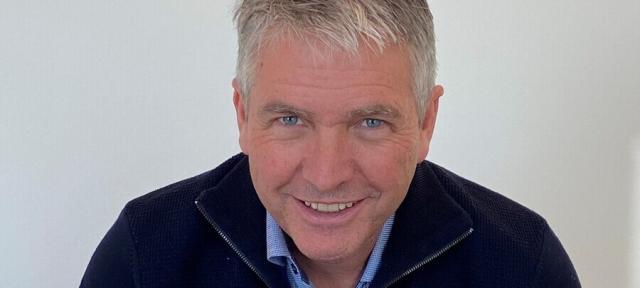Alum and Trustee Stephan Jost 87F Credits Hampshire for His Flexibility and Interdisciplinary Thinking

His years as a student at the College continue to inform his work heading up an international art museum that values celebrating different cultures and perspectives.
Director and CEO of the Art Gallery of Ontario (AGO) and former Hampshire Trustee Stephan Jost 87F came to the College knowing he wanted to be a museum director. When he studied 16th-century Dutch stained glass windows with Professor Emerita of Art History Sura Levine, he says, he “learned the importance of risk and innovation as well as the importance of pluralism—that a diverse community leads to diverse perspectives, and diverse perspectives are always a positive.” This appreciation for pluralism has been particularly valuable leading a museum in Toronto, which he calls “the most diverse city in the world.”
Sixty percent of Toronto and 60 percent of the museum’s annual 750,000–one million visitors come from a non-European background, and more than half of the visitors are in their 30s or younger, not counting those on school visits. “The museum’s visitors are cooler than I am,” Jost says, laughing. “The diversity of our audience must be reflected within the museum’s collections. That’s just common sense. The museum should be a unifying umbrella that allows visitors to see and understand the best of all cultures.” Jost is currently overseeing the largest project of his career, which will help the AGO be just that.
A massive expansion will add 40,000 feet of gallery space, and three teams are involved: Technical execution is coming from the architectural firm Diamond Schmitt, the design architecture is by Selldorf Architects, and Brian Porter’s Two Row Architects is ensuring that Indigenous values and worldviews are part of the execution. “The final goal of the project isn’t complicated,” says Jost. “We want to house and show more art. The entire expansion, with the exception of utility closets, consists of public space.”
Jost’s career has required that he move even beyond coast to coast. “It’s necessary to be both intellectually and geographically flexible when you work for museums,” he says. He directed the Mills College Art Museum, in Oakland, the Shelburne Museum, of Shelburne, Vermont, and the Honolulu Museum of Art before landing in Ontario.
“Adjusting to reality enables people and institutions to consider and clarify their values and ultimately pull them closer,” Jost says. He and the rest of the museum’s expansion team have had to pivot constantly during the project, particularly with the onset of tariffs, which has required sourcing materials from Germany that were originally supposed to come from the United States.
Jost says adaptability and clarification of values are valuable lessons from his time at Hampshire. As student treasurer of the College’s Community Council, he learned, he says, that “budgets are moral documents. They show what you literally value.” He also credits Hampshire for teaching him to “think interdisciplinarily all the time: Leading a museum is interdisciplinary,” he says. “It’s about art, money, and social and political change. I wouldn’t have had professional success without these lessons.”
Hampshire students learn how to critique at the start of their studies, Jost says, before they go on to the freedom to discover and create in their Div II and III. He agrees that learning how to critique is important, but also that it’s just a beginning. “It’s easy to say that museums reflect colonialism,” he says. “That’s absolutely historically true. But where do we go from there? What is the future we want to build together?”




